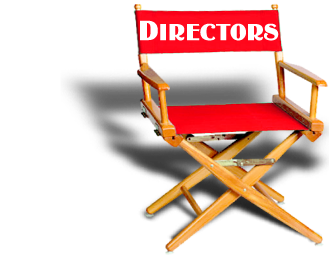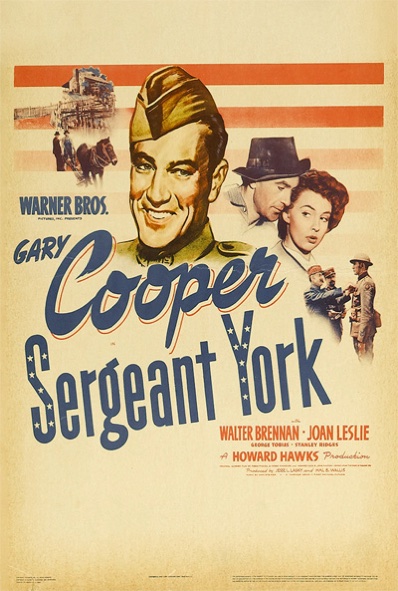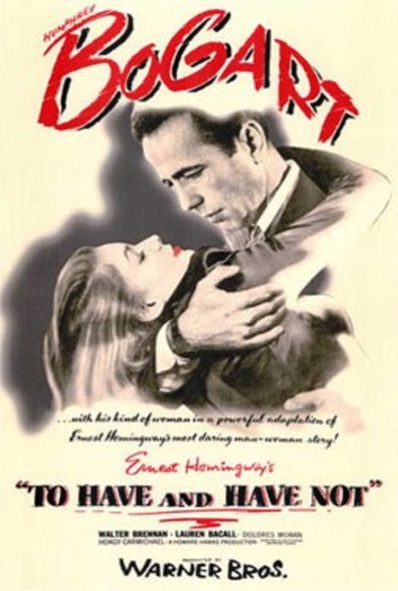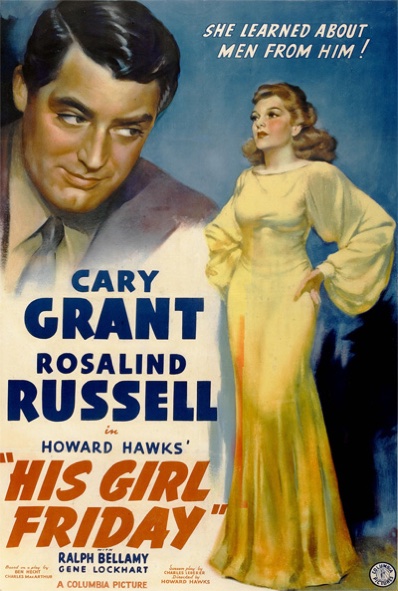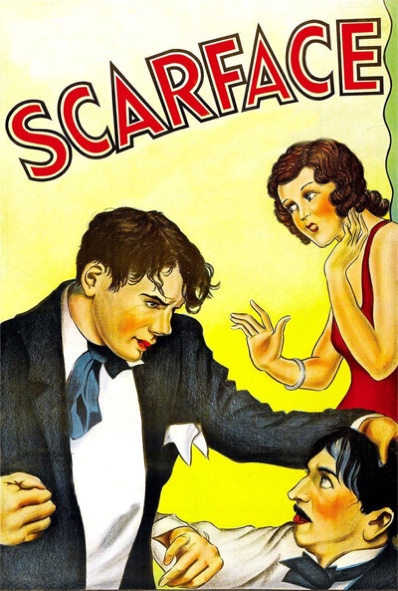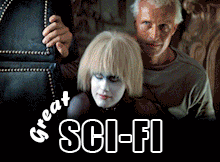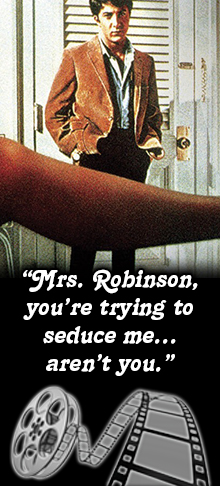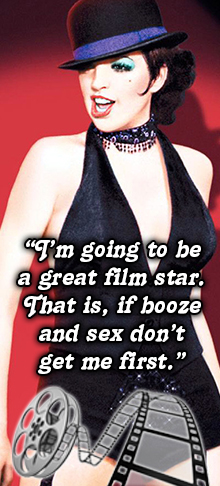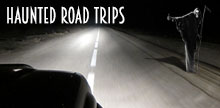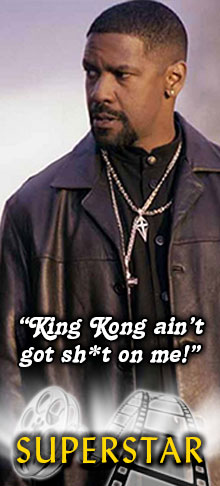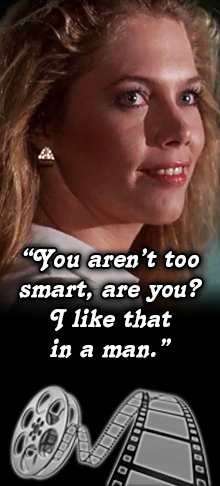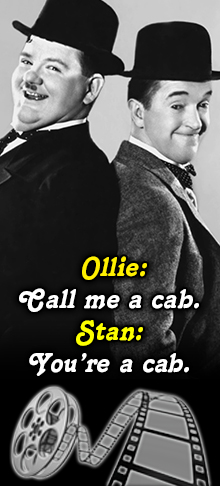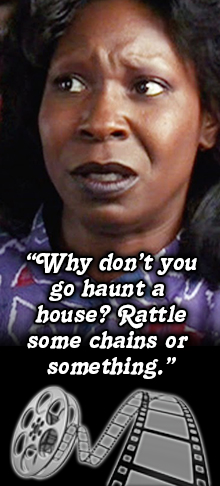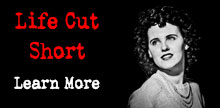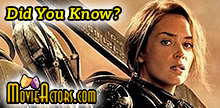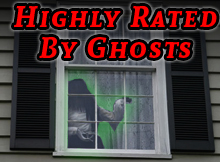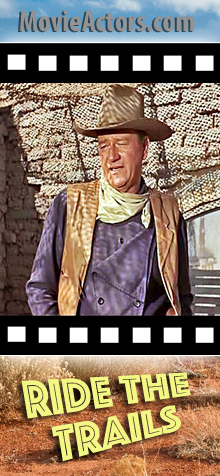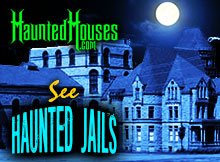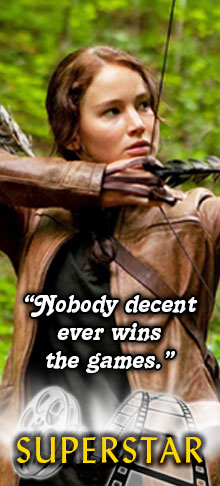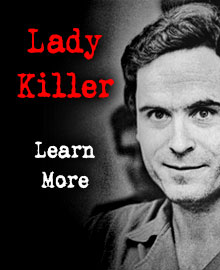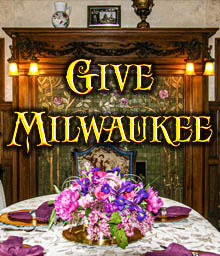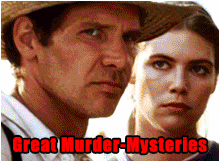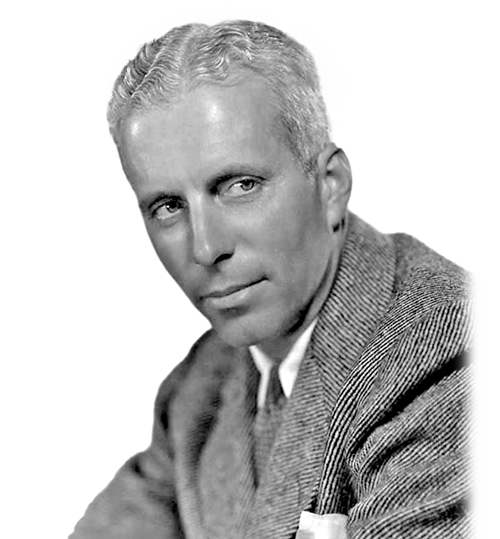
Howard Hawks
Best known for a wide variety of films in a wide variety of genres, including Scarface (1932), Bringing Up Baby (1938), Only Angels Have Wings (1939), His Girl Friday (1940), Sergeant York (1941), To Have and Have Not (1944), The Big Sleep (1946), Red River (1948), The Thing from Another World (1951), Monkey Business (1952), Gentlemen Prefer Blondes (1953), and Rio Bravo (1959).
Howard Winchester Hawks was born in Goshen, Indiana, on May 30, 1896 the first-born child of Frank W. Hawks, a wealthy paper manufacturer, and his wife, Helen (née Howard), the daughter of a wealthy industrialist. Hawks’s family on his father’s side were American pioneers and his ancestor John Hawks had emigrated from England to Massachusetts in 1630.
In 1898 the family had moved to Neenah, Wisconsin where Frank Hawks began working for his father-in-law’s Howard Paper Company.
Between 1906 and 1909 the Hawks family spent more time in Pasadena, California during the cold Wisconsin winters in order to improve Helen Hawks’s ill health. Gradually they began to spend only their summers in Wisconsin before permanently moving to Pasadena in 1910. The family settled in a house down the street from Throop Polytechnic Institute (which would eventually become California Institute of Technology), and the Hawks children began attending the school’s Polytechnic Elementary School in 1907.
Hawks was an average student at school and did not excel in sports, but by 1910 had discovered coaster racing. In 1911, Hawks’s youngest sibling Helen died suddenly of food poisoning. From 1910 to 1912 Hawks attended Pasadena High School. In 1912 the family moved to nearby Glendora, where Frank Hawks owned orange groves. Hawks finished his junior year at Citrus Union High School in Glendora, and was then sent to Phillips Exeter Academy in New Hampshire, from 1913 to 1914. While in New England, he often went to see theatrical shows in Boston. In 1914 Hawks returned to Glendora and graduated from Pasadena High School in 1914. In 1914 he was accepted to Cornell University in Ithaca, New York, where he majored in mechanical engineering. As always, he was an average student, and college friend Ray S. Ashbury remembered him spending more time playing craps and drinking than studying, although Hawks was also a voracious reader of popular American and English novels.
In 1916, Hawks’ grandfather, C.W. Howard, bought him a Mercer race car and Hawks began racing and working on his new car during the summer vacation in California. It was at this time that he first met Victor Fleming, supposedly when the two of them raced on a dirt track and had an accident.
Meeting Fleming led to Hawks’s first job in the film industry, as a prop boy on the Douglas Fairbanks film In Again, Out Again, on which Fleming was employed as the cinematographer. According to Hawks, a new set had to be built quickly while the studio’s set designer was unavailable and Hawks volunteered to do the job himself, much to Fairbanks’s satisfaction. He was next employed as a prop boy and general assistant on an unspecified film directed by Cecil B. DeMille (Hawks never named the film in later interviews and DeMille made five films in that time period). While breaking into the film industry in the summer of 1916, Hawks also tried, unsuccessfully, to transfer to Stanford University, before returning to Cornell in September. Hawks left Cornell in April 1917 when the U.S. declared war on Germany and entered World War I. Like many college students who joined the armed services at that time, he received a degree in absentia. Before he was called for active duty, Hawks went back to Hollywood and by the end of April 1917 was working on Cecil B. DeMille’s The Little American. Hawks next worked on the Mary Pickford film The Little Princess, directed by Marshall Neilan. According to Hawks, Neilan didn’t show up to work one day and Hawks offered to direct a scene himself, and Pickford agreed to it.
Hawks began directing when he was 21 after he and cinematographer Charles Rosher filmed a double exposure dream sequence with Mary Pickford. Hawks worked with Pickford and Neilan again on Amarilly of Clothes-Line Alley before joining the United States Army Air Service. He spent 15 weeks in basic training at the U.C. in Berkeley where he was trained to be a squadron commander. When Pickford visited Hawks at basic training, his superior officers were so impressed that they promoted him to flight instructor and sent him to Texas to teach new recruits. Bored with his duties there, Hawks tried to get a transfer in the first half of 1918 before finally being sent to Fort Monroe, Virginia. But the Armistice was signed in November of that year and Hawks was discharged as a Second Lieutenant without seeing active duty.
After the War, Hawks was eager to return to Hollywood. After also serving in the Air Force, his brother Kenneth Hawks graduated from Yale in 1919 and the brothers moved to Hollywood together to pursue their careers. They quickly made friends with Hollywood insider (and fellow Ivy Leaguer) Allan Dwan, but Hawks landed his first important job when he used his family’s wealth to loan money to studio head Jack L. Warner. Warner quickly paid the loan back and hired Hawks as a producer to “oversee” the making of a new series of one-reel comedies starring the Italian comedian Monty Banks. Hawks stated that he personally directed “three or four” of the shorts, but no documentation exists to confirm this. The films were profitable, but Hawks soon left the series and went on to form his own production company using his family wealth and connections to secure financing. The company was named Associated Producers and was a joint venture between Hawks, Allan Dwan, Marshall Neilan and director Allen Holubar. The company made 14 films between 1920 and 1923, with eight directed by Neilan, three by Dwan and three by Holubar. More of a “boy’s club” than a production company, the four men gradually drifted apart by 1923, at which time Hawks decided that he wanted to direct instead of produce.
Beginning in early 1920, Hawks lived in rented houses in Hollywood with the group of friends he was accumulating. This rowdy assemblage of mostly macho, risk-taking men included his brother Kenneth Hawks, Victor Fleming, Jack Conway, Harold, Richard, and Arthur Rosson, and Eddie Sutherland. Hawks also met Irving Thalberg, the frail and sickly vice-President in charge of production at Metro-Goldwyn-Mayer at this time. Eventually many of the young men in this group grew successful at MGM under Thalberg, and Hawks admired his intelligence and sense of story. At the same time, he was becoming friends with barn stormers and pioneer aviators at Rogers Airport in Los Angeles, getting to know men like Moye Stephens. In 1923, Famous Players-Lasky president Jesse Lasky was looking for a new Production Editor in the Story department of his studio, and Thalberg suggested Hawks. Hawks accepted and was immediately put in charge of over forty productions, including many literary acquisitions that included works by Joseph Conrad, Jack London and Zane Grey. Hawks worked on the scripts for all of the films produced, but had his first official screenplay credit in 1924 on Tiger Love. Although he signed a new one-year contract with Famous-Players in the fall of 1924, he broke his contract to become a story editor for Thalberg at MGM on the promise that Thalberg would make him a director in a year. In 1925 when Thalberg hesitated to follow through, Hawks broke his contract at MGM.
In October 1925, Sol Wurtzel, William Fox’s studio superintendent at the Fox Film Corporation, invited Hawks to join his company with the promise of letting Hawks direct. Over the next three years, Hawks directed his first eight films (six silent, two “talkies”). A few months after joining Fox Kenneth Hawks was also hired and eventually became one of Fox’s top production supervisors. Hawks reworked the scripts of most of the films he directed without always taking official credit for his work. He also worked on the scripts for Honesty — The Best Policy in 1926 and Joseph von Sternberg’s Underworld in 1927, famous for being one of the first gangster films. In 1926 Hawks was introduced to Athole Shearer by his friend Victor Fleming, who was dating Athole’s sister Norma Shearer at the time. Shearer’s first marriage to writer John Ward was unhappy and she and Hawks began dating in 1927, until Shearer asked Ward for a divorce in 1928. Shearer had a young son with Ward named Peter. At the same time, Kenneth Hawks began dating actress Mary Astor, and Hawks’s youngest brother Bill began dating actress Bessie Love. Kenneth Hawks and Mary Astor eventually married in February 1928, while Bill Hawks and Bessie Love married in December 1929.
Hawks’s first film The Road to Glory was based on a 35-page treatment that Hawks wrote and is one of only two Hawks films that are lost films. The film stars May McAvoy as a young woman who is gradually going blind and tries to spare the two men in her life from the burden of her illness. The film featured religious iconography and messages that would never again be seen in a Hawks film. It was shot from December 1925 to January 1926 and premiered in April and received good reviews from critics. In later interviews, Hawks said “It didn’t have any fun in it. It was pretty bad. I don’t think anybody enjoyed it except a few critics.” Hawks was dissatisfied with the film after being certain that dramatic films would establish his reputation, but realized what he had done wrong when Sol Wurtzel told Hawks “Look, you’ve shown you can make a picture, but for God’s sake, go out and make entertainment.”
Hawks began writing his next film, Fig Leaves, his first comedy. The film portrays a married couple by juxtaposing them in the Garden of Eden and in modern New York City. The Garden of Eden humorously depicts Adam and Eve awoken by a Flintstones-like coconut alarm clock and Adam reading the morning paper off of giant stone tablets. Then in the modern day the biblical serpent is replaced by Eve’s gossiping neighbor and Eve becomes a sexy flapper and fashion model when Adam is at work. The film starred George O’Brien as Adam and Olive Borden as Eve and received positive reviews. Released in July 1926, it was Hawks’s first hit as a director. Although he mainly dismissed his early work, Hawks though highly enough of the film to praise it in later interviews.
Paid to Love is notable in Hawks’s filmography as being the only time that he made a highly stylized, experimental film. It includes atypical tracking shots, expressionistic lighting and stylistic editing that was inspired by German Expressionist films. In a later interview, Hawks observed, “It isn’t my type of stuff, at least I got it over in a hurry.” Hawks worked on the script with Seton I. Miller, with whom he would go on to collaborate on seven more films. The film stars George O’Brien as the introverted Crown Prince Michael, William Powell as his happy-go-lucky brother and Virginia Valli as Michael’s flapper love interest. Valli’s character was an early example of the Hawksian female archetype — a sexually aggressive showgirl — while O’Brien’s Michael portrayal of a shy man not interested in sex is a character later elaborated on by Cary Grant and Gary Cooper in subsequent Hawks films. Paid to Love was completed by September 1926, but remained unreleased until July 1927, at which time it was unsuccessful at the box office.
Cradle Snatchers was based on a 1925 hit stage play by Russell G. Medcraft and Norma Mitchell about three unhappy, middle-aged housewives who punish their adulterous husbands by starting affairs with college-aged young men during the jazz age. The film starred Louise Fazenda, Dorothy Phillips and Ethel Wales, was shot in 1927, and was a minor hit upon release.
In March 1927 Hawks signed a new one-year, three-picture contract with Fox and was assigned to direct Fazil, based on the play L’Insoumise by Pierre Frondaie. Hawks again worked with Seton Miller on the script about a Middle Eastern prince who has an affair with a Parisienne showgirl and cast Charles Farrell as the prince and Greta Nissen as Fabienne.
A Girl in Every Port is considered by film scholars to be the most important film of Hawks’s silent career because it introduced many of the Hawksian themes and characters that would continue until his final films. It was his first “love story between two men,” with two men bonding over their duty, skills and careers and considering their friendship to be more important than relationships with women. Hawks wrote the original story and developed the screenplay with James Kevin McGuinness and Seton Miller. In the film Victor McLaglen and Robert Armstrong play merchant seamen who are arch rivals when it comes to women, with McLaglen constantly finding Armstrong’s tattoo on the women he is trying to seduce. Eventually the rivals become friends. Louise Brooks plays the cabaret singer with whom the two men fall in love. The film was successful in the US, and a hit in Europe, where Louise Brooks was building a cult following. But Hawks once again went over budget with this film and his relationship with producer Sol Wurtzel became worse. After an advance screening that got positive reviews, Wurtzel told Hawks, “This is the worst picture Fox has made in years.”
The Air Circus is Hawks’ first film centered on aviation, one of his early loves. In 1928, Charles Lindbergh was the world’s most famous person and Wings was one of the most popular films of the year. Desirous of capitalizing on the country’s aviation craze, Fox immediately bought Hawks’s original story for The Air Circus, a variation of the male friendship plot of A Girl in Every Port. In the film, Arthur Lake and David Rollins play two eager young pilots at flight school who compete over their flight instructors aviatrix sister played by Sue Carol. The film was shot from April to June of 1928, but Fox wanted 15 minutes of dialogue footage to be shot so the film could compete with the new “talkies” being released. Hawks hated the new dialogue and he refused to participate in the re-shoots. The film was released in September 1928 and became a moderate hit. It is one of two films directed by Hawks that are lost films.
Trent’s Last Case is an adaptation of British author E. C. Bentley’s 1913 novel of the same name, and had already been adapted to film in England in 1920. Hawks considered the novel to be “one of the greatest detective stories of all time” and was eager to make it his first sound film. He cast Raymond Griffith in the lead role of Phillip Trent. Griffith’s throat had been damaged by poison gas during World War I and his voice was a hoarse whisper, prompting Hawks to observe later: “I thought he ought to be great in talking pictures because of that voice.” After shooting only a few scenes, however, Fox shut Hawks down and ordered him to make a silent film, both because of Griffith’s voice and because they only owned the legal rights to make a silent film. The film had a musical score and synchronized sound effects, but no dialogue. Due to the cratering business of silent films, it was never released in the US and only briefly screened in England, where film critics hated it. The film was believed lost until the mid-1970s and was screened for the first time in the US at a Hawks retrospective in 1974. Hawks was in attendance of the screening and tried to have the only print of the film destroyed.
By 1930, Hollywood was in upheaval over the coming of “talkies” and many careers (both actors and directors) were destroyed. Many Hollywood studios were recruiting stage actors and directors who they believed were better suited for sound films. After working in the industry for 14 years and directing many successful films, Hawks found that he had to prove himself all over again to the studios. After several months of unemployment, he revived his career with his first sound film in 1930.
On January 2, 1930, Hawks’s brother Kenneth Hawks died while shooting the film Such Men Are Dangerous. Kenneth’s career as a director had been quickly rising after his debut film Big Time in 1929. This sound film starred Lee Tracy and Mae Clarke and was an early example of the “fast-talking” sound films that Howard Hawks would later make one of his signatures. Such Men Are Dangerous was based on the life of Alfred Lowenstein, a Belgian captain who either jumped or fell out of his plane in 1928. On January 2, Kenneth Hawks and his crew flew three aircraft (two with cameras, one with a stunt actor) over Santa Monica Bay when the two camera aircraft crashed into each other, killing 10 men. The crash was the first major on-set accident in Hollywood history and made national news.
Hawks’s first all sound film was The Dawn Patrol, based on an original story by John Monk Saunders and, unofficially, Hawks himself. Saunders was a flight instructor during World War I and had written Wings. He was considered one of the most talented writers in Hollywood and was often compared to F. Scott Fitzgerald and Ernest Hemingway. Accounts vary on who first came up with the idea of the film, but Hawks and Saunders developed the story together and tried to sell it to several studios before First National agreed to produce it. Saunders received solo screen credit for the original story and won an Academy Award for Best Story in 1930. The screenplay was written by Hawks, Seton Miller and Dan Totheroh and starred Richard Barthelmess and Douglas Fairbanks, Jr. Shooting began in late February 1930, about the same time that Howard Hughes was finally finishing his epic World War I aviation epic Hell’s Angels. Hawks shrewdly began to hire many of the aviation experts and cameramen that had been employed by Hughes, including Elmer Dyer, Harry Reynolds and Ira Reed. When Hughes found out about the rival film, he did everything he could to sabotage it. He harassed Hawks and other studio personal, hired a spy who was quickly caught and sued First National for copyright infringement. Hughes finally dropped the lawsuit in late 1930, and he and Hawks became good friends during the legal battle. In the film, Barthelmess and Fairbanks play two Royal Flying Corps pilots during World War I who deal with the pressure of wartime combat and constant death by drinking and fighting with their commanding officer. The film became one of the biggest hits of 1930.
Hawks did not get along with Warner Brothers executive Hal B. Wallis and his contract allowed him to be loaned out to other studios. Hawks took the opportunity to accept a directing offer from Harry Cohn at Columbia Pictures: The Criminal Code, based on a successful play by Martin Flavin. Hawks and Seton Miller worked on the script with Flavin for a month and filming began in September 1930. The film starred Walter Huston, Phillips Holmes, Constance Cummings and Boris Karloff. Huston plays a prison warden who wants to reform the conditions of the inmates and Holmes plays a wrongly convicted prisoner who learns about the “code” of not ratting on other inmates. Hawks called Huston “the greatest actor I ever worked with”. Hawks also worked with his old friend James Wong Howe for the first time as a cinematographer. The film opened in January 1931 and was a hit. Hawks encountered a minor amount of censorship when the film was banned in Chicago — a harbinger of troubles to come with his next film.
In 1930, Howard Hughes hired Hawks to direct Scarface, a gangster film loosely based on the life of Chicago mobster Al Capone. The film starred Paul Muni in the title role, with memorable supporting performances from George Raft, Boris Karloff, and Osgood Perkins. The film was completed in September 1931, but the censorship of the Hays Code prevented it from being released as Hawks and Hughes had originally intended, and the two men fought the Hays Office (making compromises along the way) for over a year until the film was released in 1932, after such other pivotal early gangster films as The Public Enemy and Little Caesar. Scarface was the first film in which Hawks worked with screenwriter Ben Hecht, who became a close friend and collaborator for 20 years.
After filming was complete on Scarface, Hawks left Hughes to fight the legal battles and returned to First National to fulfill his contract, this time with producer Darryl F. Zanuck. For his next project, Hawks wanted to make a film about his childhood passion: car racing. The Crowd Roars is loosely based on the play The Barker: A Play of Carnival Life by Kenyon Nicholson. Hawks developed the script with Seton Miller for their eighth and final collaboration and the script was by Miller, Kubec Glasmon, John Bright and Niven Busch. The film starred James Cagney, Eric Linden, Joan Blondell and Ann Dvorak. In the film, Cagney plays a race car driver who tries to “protect” his younger brother Linden, who is also a driver, from being distracted by his girlfriend, Blondell. At the same time, Cagney must hide his own neurotic girlfriend, played by Dvorak, from his younger brother. Blondell and Dvorak were initially cast in each other’s roles but swapped after a few days of shooting. Hawks used real race car drivers in the film, including the 1930 Indianapolis 500 winner Billy Arnold. The film was a hit.
Later in 1932 he directed Tiger Shark, starring Edward G. Robinson as a tuna fisherman. In these early films, Hawks created the prototypical “Hawksian Man”, who, film critic Andrew Sarris wrote, was “upheld by an instinctive professionalism.”
In 1933 Hawks signed a three-picture deal at MGM and his first film there was Today We Live, starring Joan Crawford and Gary Cooper. The World War I film was based on a short story by William Faulkner, who Hawks got to know personally during the shooting of the film and remained friends with for over 20 years.
Hawks’s next two films at MGM were the boxing drama The Prizefighter and the Lady and the bio-pic Viva Villa!, starring Wallace Beery as Mexican Revolutionary leader Pancho Villa. Because of studio interference on both films, Hawks walked out on his MGM contract without completing either film himself.
In 1934 Hawks went to Columbia Pictures to make his first screwball comedy, Twentieth Century, starring John Barrymore and Hawks’s distant cousin Carole Lombard. The film was based on a stage play by Ben Hecht and Charles MacArthur, and along with Frank Capra’s It Happened One Night (released the same year) is considered a defining film of the screwball comedy genre. In 1935 Hawks made Barbary Coast with Edward G. Robinson and Miriam Hopkins. In 1936 he made the aviation adventure Ceiling Zero with James Cagney and Pat O’Brien. Also in 1936, Hawks began filming Come and Get It, starring Edward Arnold, Joel McCrea, Frances Farmer and Walter Brennan. Hawks was fired by Samuel Goldwyn in the middle of shooting and the film was finished by William Wyler.
In 1938 he made the screwball comedy Bringing Up Baby for RKO. The film starred Cary Grant and Katharine Hepburn and was called “the screwiest of the screwball comedies” by film critic Andrew Sarris. In the film, Grant plays a near-sighted paleontologist who suffers one humiliation after another due to the lovestruck socialite played by Hepburn. Bringing Up Baby was unsuccessful when first released but has gradually become regarded as Hawks’s masterpiece. Hawks followed this with the aviation drama Only Angels Have Wings, again starring Cary Grant. The film also starred Jean Arthur, Thomas Mitchell, Rita Hayworth and Richard Barthelmess.
In 1940 Hawks returned again to the screwball comedy genre with His Girl Friday, starring Cary Grant and Rosalind Russell. The film was an adaptation of the hit Broadway play The Front Page by Ben Hecht and Charles MacArthur, which had already been made into a film in 1931, and again with some of the plot lines reworked by the same screenwriters and transplanted to Rudyard Kipling’s India for Gunga Din the year before His Girl Friday, with Cary Grant in that script’s counterpart to the same role. In 1941 Hawks made Sergeant York, starring Gary Cooper as a pacifist farmer who becomes a decorated World War I soldier. The film was the highest-grossing film of 1941 and won two Academy Awards (for Best Actor and Best Editing), as well as earning Hawks his only nomination for Best Director. Later that year Hawks re-teamed with Cooper for Ball of Fire, also starring Barbara Stanwyck. The film was written by Billy Wilder and Charles Brackett and is playfully based on Snow White and the Seven Dwarfs. In the film, Cooper plays a sheltered, intellectual linguist who is writing an encyclopedia with six other scientists, and hires the street-wise Stanwyck to help them with modern slang. In 1941 Hawks began work on the Howard Hughes produced (and later directed) film The Outlaw, based on the life of Billy the Kid and starring Jane Russell. Hawks completed initial shooting of the film in early 1941, but due to perfectionism and battles with the Hollywood Production Code, Hughes continued to re-shoot and re-edit the film until it was finally released in 1943, with Hawks uncredited as director.
After making the World War II film Air Force in 1943 starring John Garfield, Hawks made two films with Hollywood and real life lovers Humphrey Bogart and Lauren Bacall. To Have and Have Not, made in 1944, stars Bogart, Bacall and Walter Brennan and is based on the novel by Ernest Hemingway. Hawks was a close friend of Hemingway and made a bet with him that he could make a good film out of Hemingway’s “worst book”. Hawks, William Faulkner and Jules Furthman collaborated on the script about an American fishing boat captain working out of French Martinique in the Caribbean and various situations of espionage after the Fall of France in 1940. Bogart and Bacall fell in love on the set of the film and married soon afterwards. Hawks re-teamed with the newlyweds in 1946 with The Big Sleep, based on the Philip Marlowe detective novel by Raymond Chandler.
In 1948, Hawks made Red River, an epic western reminiscent of Mutiny on the Bounty starring John Wayne and Montgomery Clift in his first film. Later that year, Hawks remade his earlier film Ball of Fire as A Song Is Born, this time starring Danny Kaye and Virginia Mayo. This version of the film follows the same plot but pays more attention to popular jazz music and includes jazz legends Tommy Dorsey, Benny Goodman, Louis Armstrong, Lionel Hampton, and Benny Carter playing themselves. In 1949 Hawks re-teamed with Cary Grant in the screwball comedy I Was a Male War Bride, also starring Ann Sheridan.
In 1951, Hawks produced, and some believe essentially directed, the science fiction film The Thing from Another World. Director John Carpenter stated: “And let’s get the record straight. The movie was directed by Howard Hawks. Verifiably directed by Howard Hawks. He let his editor, Christian Nyby, take credit. But the kind of feeling between the male characters — the camaraderie, the group of men that has to fight off the evil — it’s all pure Hawksian.” He followed this with the 1952 western The Big Sky, starring Kirk Douglas. Later in 1952 Hawks re-teamed with Cary Grant for the fifth and final time in the screwball comedy Monkey Business, also starring Marilyn Monroe and Ginger Rogers. Grant plays a scientist reminiscent of his character in Bringing up Baby, who creates a formula that increases his vitality. Hawks’s third film of 1952 was a contribution to the omnibus film O. Henry’s Full House, which includes short films based on the stories by the writer O. Henry made by various directors. Hawks’s short film The Ransom of Red Chief starred Fred Allen, Oscar Levant and Lee Aaker.
In 1953, Hawks made Gentlemen Prefer Blondes, which featured Marilyn Monroe famously singing “Diamonds Are a Girl’s Best Friend.” The film starred Monroe and Jane Russell as two gold digging, cabaret performer best friends who many critics point out are Hawks’s only female version of his celebrated “buddy film” genre. In 1955 Hawks made an atypical Land of the Pharaohs, a Sword-and-sandal epic about ancient Egypt and starring Jack Hawkins and Joan Collins. The film was Hawks’s final collaboration with longtime friend William Faulkner before Faulkner’s death. In 1959 Hawks re-teamed with John Wayne in Rio Bravo, also starring Dean Martin, Ricky Nelson and Walter Brennan as four lawmen “defending the fort” of their local jail where a local criminal is awaiting a trial and his family attempt to break him out. Film critic Robin Wood has said if he “were asked to choose a film that would justify the existence of Hollywood … it would be Rio Bravo.”
In 1962 Hawks made Hatari!, again with John Wayne, as a big game hunter in Africa. In 1964 Hawks made his final comedy, Man’s Favorite Sport?, starring Rock Hudson (since Cary Grant felt he was too old for the role) and Paula Prentiss. Hawks then returned to his childhood passion for car races with Red Line 7000 in 1965. the film starred a young James Caan in his first leading role. Hawks’s final two films were both Western remakes of Rio Bravo starring John Wayne. In 1966 Hawks directed El Dorado, starring Wayne, Robert Mitchum and James Caan, which was released the following year. In 1970 he made Rio Lobo, with Wayne, Jorge Rivero and Jack Elam.
Hawks was married three times:
To Athole Shearer (1928–1940), sister of movie actress Norma Shearer, mother of his first two children, Barbara and David;
To Slim Keith (1941–1949), who was the mother of his daughter, Kitty Hawks, an interior designer; and
To Dee Hartford (1953–1959), an actress whose real name was Donna Higgins.
Hawks died on December 26, 1977, aged 81, from complications from falling over his dog several weeks earlier at his home in Palm Springs, California. He was working with his last protege discovery, Larraine Zax, at the time.
Hawks was versatile as a director, filming comedies, dramas, gangster films, science fiction, film noir, and Westerns. His own functional definition of what constitutes a “good movie” is revealing: “Three great scenes, no bad ones.” Hawks also defined a good director as “someone who doesn’t annoy you”.
While Hawks was not sympathetic to feminism, he popularized the Hawksian woman archetype, which has been cited as a prototype of the post-feminist movement according to Naomi Wise in “The Hawksian Woman”.
Orson Welles in an interview with Peter Bogdanovich said of Howard Hawks in comparison to John Ford “Hawks is great prose; Ford is poetry”.
Despite Hawks’s work in a variety of Hollywood genres, he still retained an independent sensibility. Film critic David Thomson wrote of Hawks, “Far from being the meek purveyor of Hollywood forms, he always chose to turn them upside down, To Have and Have Not and The Big Sleep, ostensibly an adventure and a thriller, are really love stories. Rio Bravo, apparently a Western — everyone wears a cowboy hat — is a comedy conversation piece. The ostensible comedies are shot through with exposed emotions, with the subtlest views of the sex war, and with a wry acknowledgment of the incompatibility of men and women.”
The directorial style and the use of natural, conversational dialogue in Hawks’ films are cited as major influences on many noted filmmakers, including Robert Altman, John Carpenter, and Quentin Tarantino. His work is admired by many notable directors, including Peter Bogdanovich, Martin Scorsese, François Truffaut, Michael Mann and Jacques Rivette.
Brian De Palma dedicated his version of Scarface to Hawks and Ben Hecht.
Critic Leonard Maltin labeled Hawks “the greatest American director who is not a household name,” noting that, while his work may not be as well known as Ford, Welles, or DeMille, he is no less a talented filmmaker.
Howard Hawks’s directing credits include…
| Year | Movie |
|---|---|
| 1970 | Rio Lobo |
| 1966 | El Dorado |
| 1965 | Red Line 7000 |
| 1964 | Man’s Favorite Sport? |
| 1962 | Hatari! |
| 1959 | Rio Bravo |
| 1955 | Land of the Pharaohs |
| 1953 | Gentlemen Prefer Blondes |
| 1952 | Monkey Business |
| 1952 | O. Henry’s Full House (segment “The Ransom of Red Chief”) |
| 1952 | The Big Sky |
| 1951 | The Thing from Another World (uncredited) |
| 1949 | I Was a Male War Bride |
| 1948 | A Song Is Born |
| 1948 | Red River |
| 1946 | The Big Sleep |
| 1944 | To Have and Have Not |
| 1943 | Corvette K-225 (uncredited) |
| 1943 | The Outlaw (uncredited) |
| 1943 | Air Force |
| 1941 | Ball of Fire |
| 1941 | Sergeant York |
| 1940 | His Girl Friday |
| 1939 | Only Angels Have Wings |
| 1938 | Bringing Up Baby |
| 1936 | Come and Get It |
| 1936 | The Road to Glory |
| 1936 | Ceiling Zero |
| 1935 | Barbary Coast |
| 1934 | Twentieth Century |
| 1934 | Viva Villa! (uncredited) |
| 1933 | The Prizefighter and the Lady (uncredited) |
| 1933 | Today We Live |
| 1932 | La foule hurle |
| 1932 | Tiger Shark |
| 1932 | The Crowd Roars |
| 1932 | Scarface |
| 1931 | The Criminal Code (uncredited) |
| 1930 | The Dawn Patrol |
| 1929 | Trent’s Last Case |
| 1928 | The Air Circus |
| 1928 | Fazil |
| 1928 | A Girl in Every Port |
| 1927 | Paid to Love |
| 1927 | The Cradle Snatchers |
| 1926 | Fig Leaves |
| 1926 | The Road to Glory |
Memorable Quotes by Howard Hawks
“There’s action only if there’s danger.”
“John Wayne represents more force, more power, than anybody else on the screen”
“Rio Bravo (1959) was made because I didn’t like a picture called High Noon (1952). I saw “High Noon” at about the same time I saw another western picture, and we were talking about western pictures and they asked me if I liked it, and I said, “Not particularly”. I didn’t think a good sheriff was going to go running around town like a chicken with his head off asking for help, and finally his Quaker wife had to save him. That isn’t my idea of a good western sheriff. I said that a good sheriff would turn around and say, “How good are you? Are you good enough to take the best man they’ve got?” The fellow would probably say no, and he’d say, “Well, then I’d just have to take care of you”. And that scene was in “Rio Bravo”.”
“I don’t think plot as a plot means much today. I’d say that everybody has seen every plot twenty times. What they haven’t seen is characters and their relation to one another. I don’t worry much about plot anymore.”
[on working with James Caan on El Dorado (1966)] “He’s a damn good actor and we started rolling the more we got into it. He got a lot of laughs playing it perfectly serious. He didn’t know he was playing it perfectly serious. He didn’t know he was playing comedy.”
[on Lauren Bacall] “We discovered Bacall was a little girl who, when she becomes insolent, becomes rather attractive. That was the only way you noticed her, because she could do it with a grin. So I said to Bogey, “We are going to try an interesting thing. You are about the most insolent man on the screen and I’m going to make this girl a little more insolent than you are.””
Things You May Not Know About Howard Hawks
To build their New England-style home, Hawks’ wife Slim used the set plans from his film Bringing Up Baby (1938).
Hawks’ wife saw Lauren Bacall on the cover of a magazine and persuaded him to put her in the movies. Bacall was only 20 when she made her screen debut in To Have and Have Not (1944).
He was an infamous teller of tall tales, usually ones where he exaggerated his already considerable involvement in the making of his films and ones where he sounded like a tough guy (punching producers, etc.)
He never got over the plane crash death of his brother Kenneth Hawks of whom, Howard later said, probably had the potential to be an even greater filmmaker than himself. Nonetheless, he continued to fly after his brother’s death and went on to shoot many films about pilots.
Directed five different actors in Oscar-nominated performances: Walter Brennan, Gary Cooper, Margaret Wycherly, Barbara Stanwyck and Arthur Hunnicutt. Cooper and Brennan won Oscars for their performances in one of Hawks’ movies.
Despite his collaborations and associations with politically outspoken stars, such as the famously right-wing John Wayne or the left-wing Humphrey Bogart, Hawks himself remained resolutely apolitical throughout his life.
